|
|
Post by Dave Evans on Jul 6, 2014 15:42:29 GMT
Right, for time being, maybe call it "Drosera indica???" At least that lets people know the identification is not solid.
If a plant doesn't closely resemble D. indica, they should at least be given a "?". And not be presented to the next person as "verified"... Hopefully reducing confusion.
|
|
|
|
Post by hcarlton on Jul 6, 2014 19:39:27 GMT
Then I also don't have D. indica since my plants have no petioles on the leaves, these came also from the seedbank from the seeds labeled as D. indica 'white flower'  I'm working on sprouting seeds of that variety too. I'm going to guess they both fit as different forms of the species D. finlaysoniana according to what the paper says. Eh, one more label to change.... |
|
|
|
Post by Dave Evans on Jul 7, 2014 23:53:33 GMT
Okay, just read some of Allen Lowerie's new books, Carnivorous Plants of Australia Magnum Opus.
In the books are D. aquatica, D. aurantiaca, D. barrettorum, D. cucullata, D. finlaysoniana, D. fragrans, D. hartmeyerorum, D. glabriscapa, D. nana and D. serpens. So far, they have not been able to find D. indica anywhere in Australia.
Most of these species have very specific characteristics which easily identify them, but some are only found on the flowers or flower stems.
In the case of D. finlaysoniana, the leaves are curved downward in cross section (like most species). On the upper surface are stalked retentive glands and stalk-less digestive glands. On the bottom of the leaves there are stalk-less retentive glands and digestive glands. The petals are either pink or white.
|
|
|
|
Post by Dave Evans on Jul 8, 2014 2:40:13 GMT
|
|
|
|
Post by hcarlton on Jul 10, 2014 23:39:10 GMT
Anyway, back to the original purpose of this thread: D. adelae 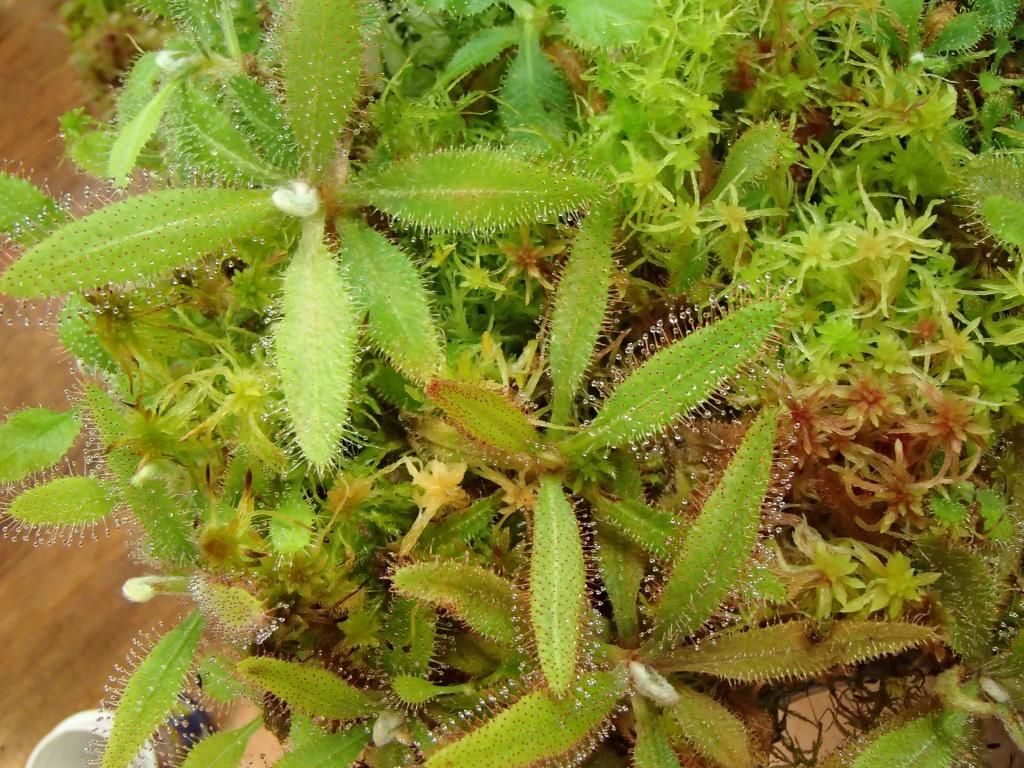 D. tomentosa, under slightly lower light conditions than the "sessilifolia" (and the camera does not pick up all the red) 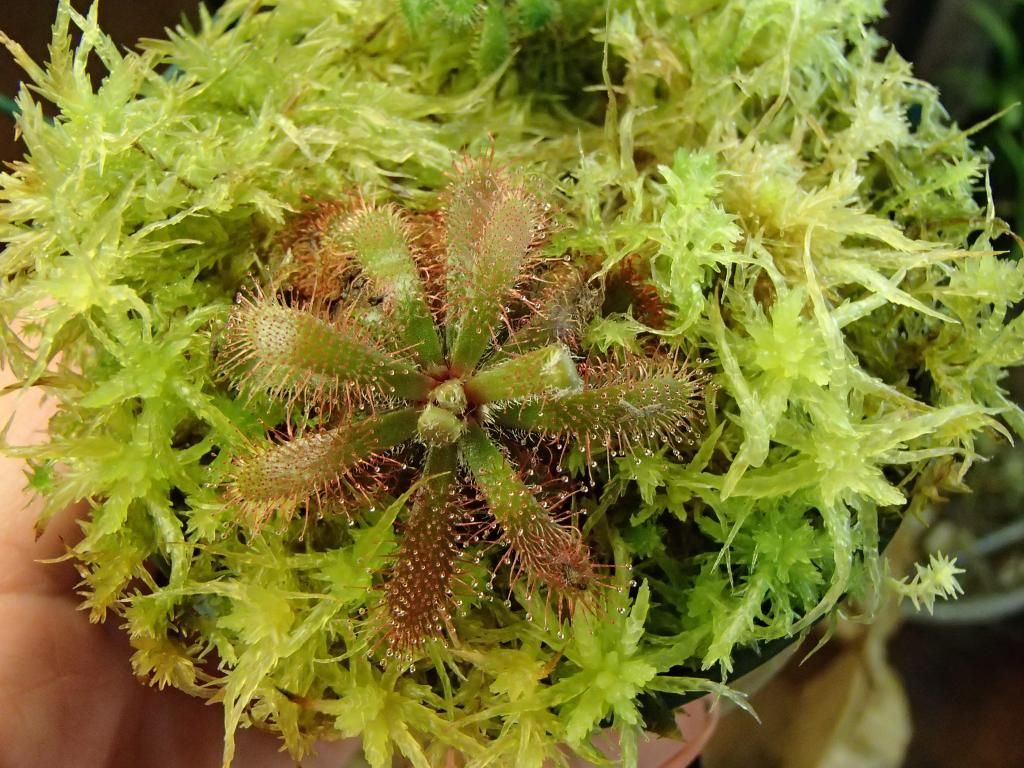 D. soon-to-be 'Tom Turpin'  D. spatulata 'Tamlin' x sp. Lantau Island 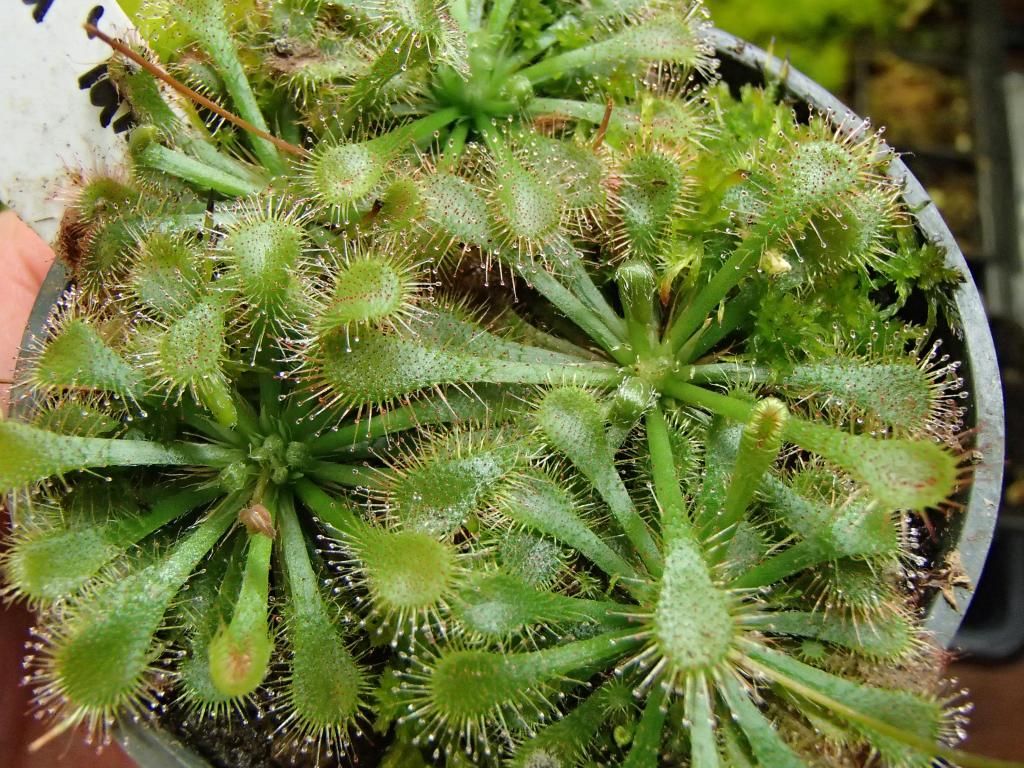 The most colorful of the potful of D. tokaiensis x spatulata 'Tamlin' 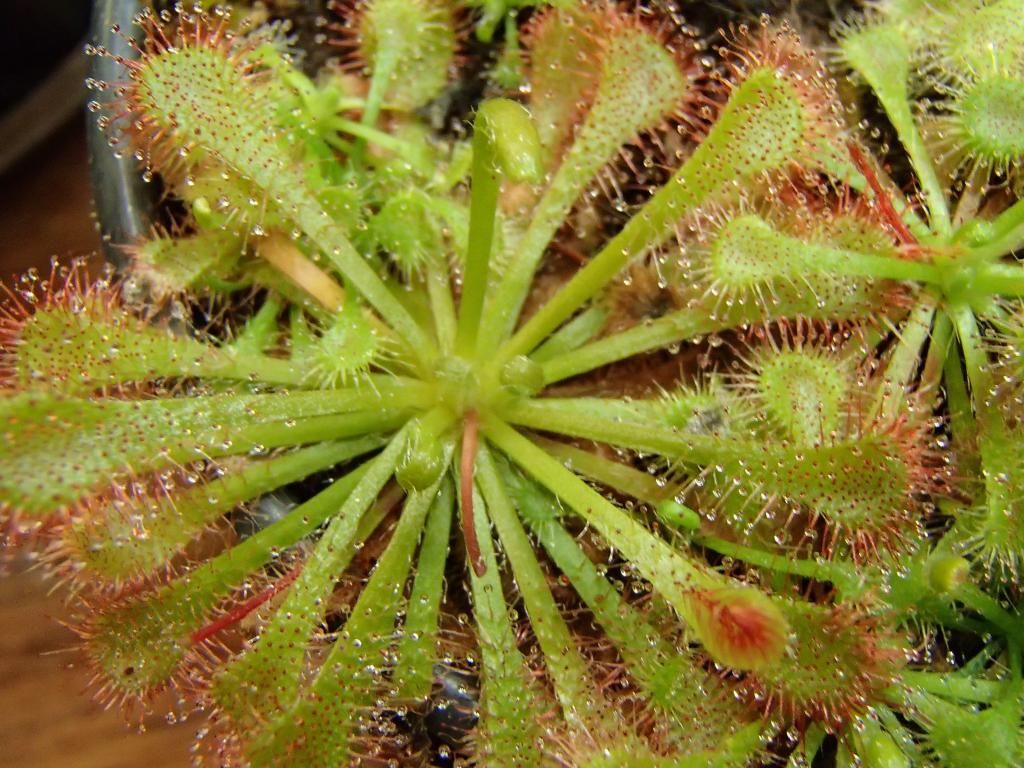 |
|
|
|
Post by r1v3rfr0g on Jul 11, 2014 12:37:08 GMT
hcarlton, this is a very impressive display. You must very hard to keep up so many nice plants. I noticed you have some interesting soil/medium.
And your sphagnum looks equally as awesome as the plants themselves! Where did it come from?
|
|
|
|
Post by hcarlton on Jul 31, 2014 16:36:36 GMT
Oh! Just realized I never answered that question: the sphagnum comes up naturally from either the peat moss or the LFS I use, and I just transfer it to new pots to get it growing everywhere. Today, just a couple flower pics: D. spatulata 'Tamlin' x sp. Lantau Island on the left, and sp. Lantau x capensis "typical" on the right. 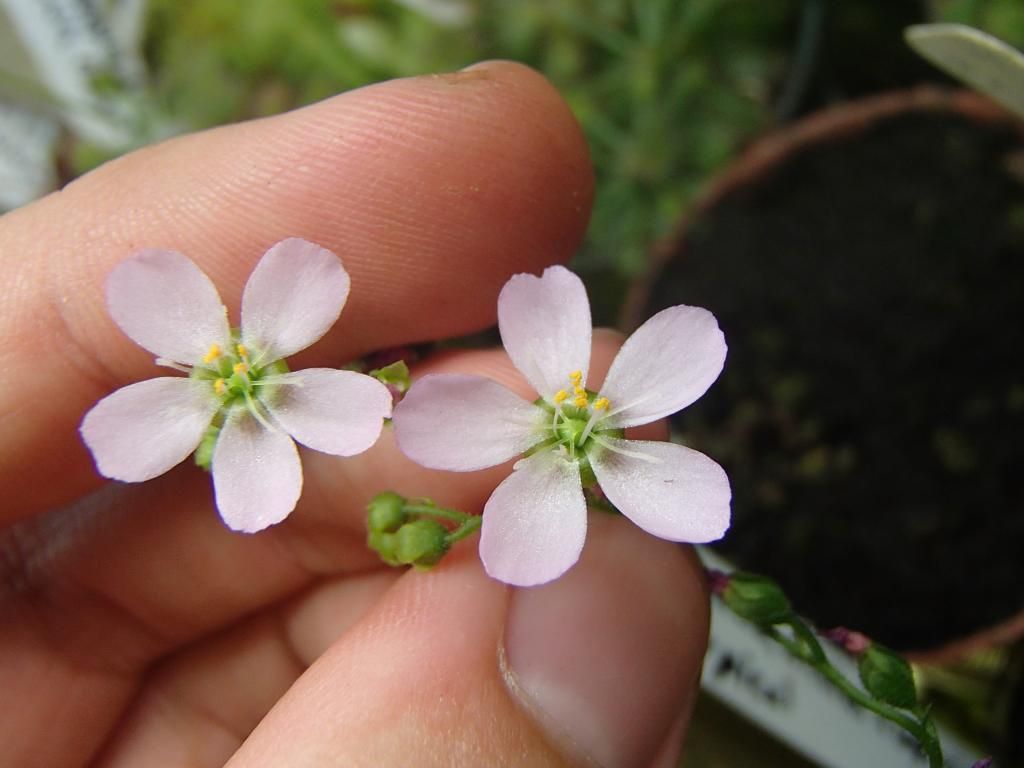 D. spatulata "Beenak, Victoria AU" 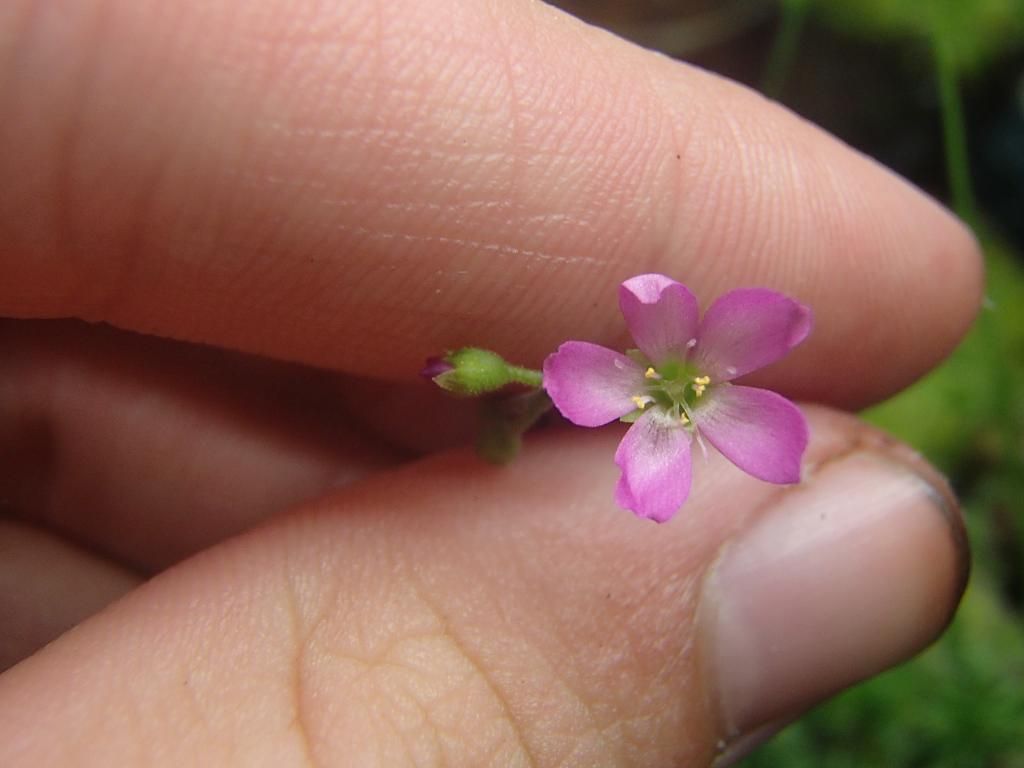 |
|
|
|
Post by hcarlton on Aug 12, 2014 20:24:04 GMT
My mystery dews again: the first one, I keep thinking is admirabilis 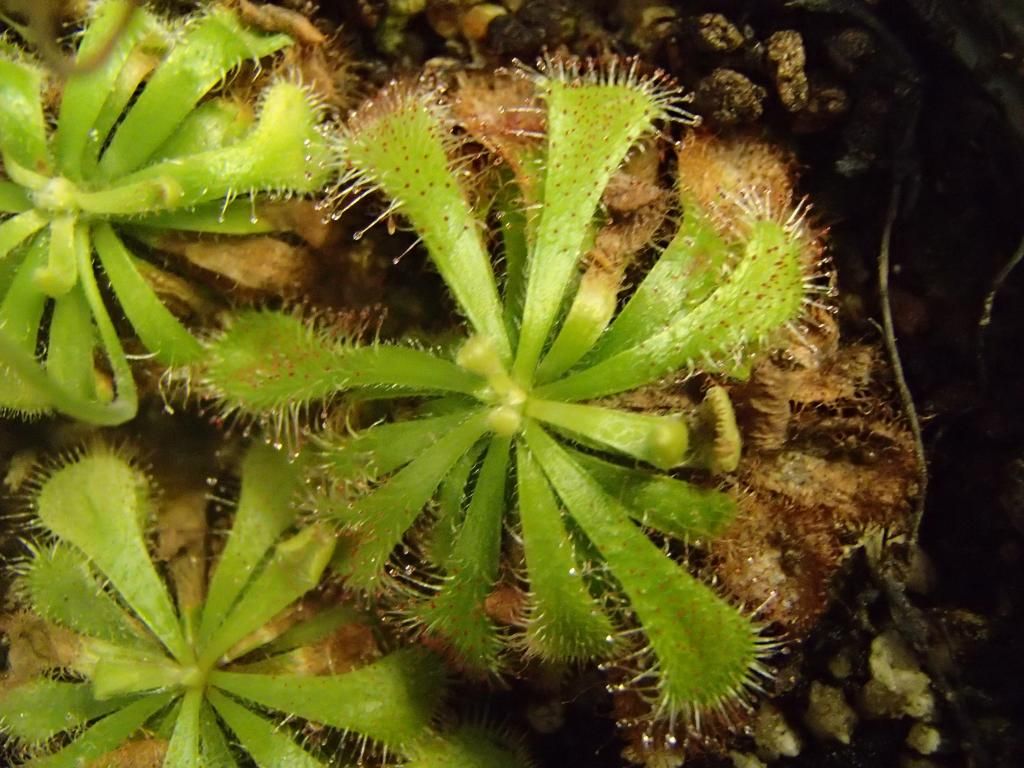 And the second, the leaf shape suggests slackii to me. But any help in ID'ing these two is appreciated 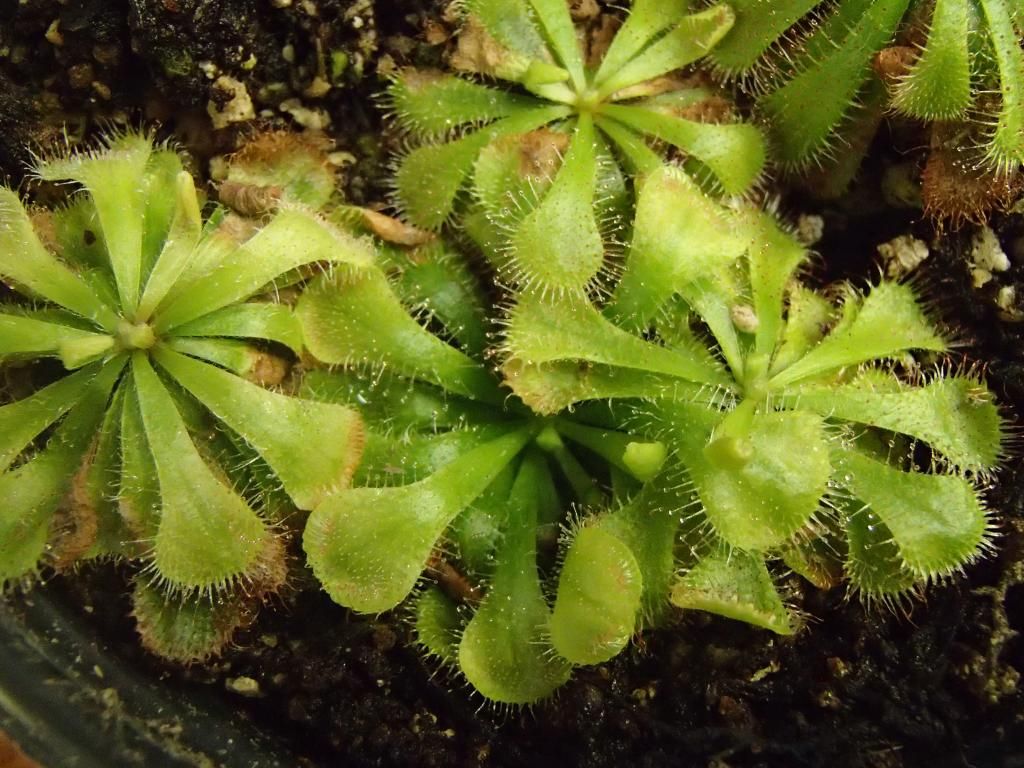 And the pot o' aliciae 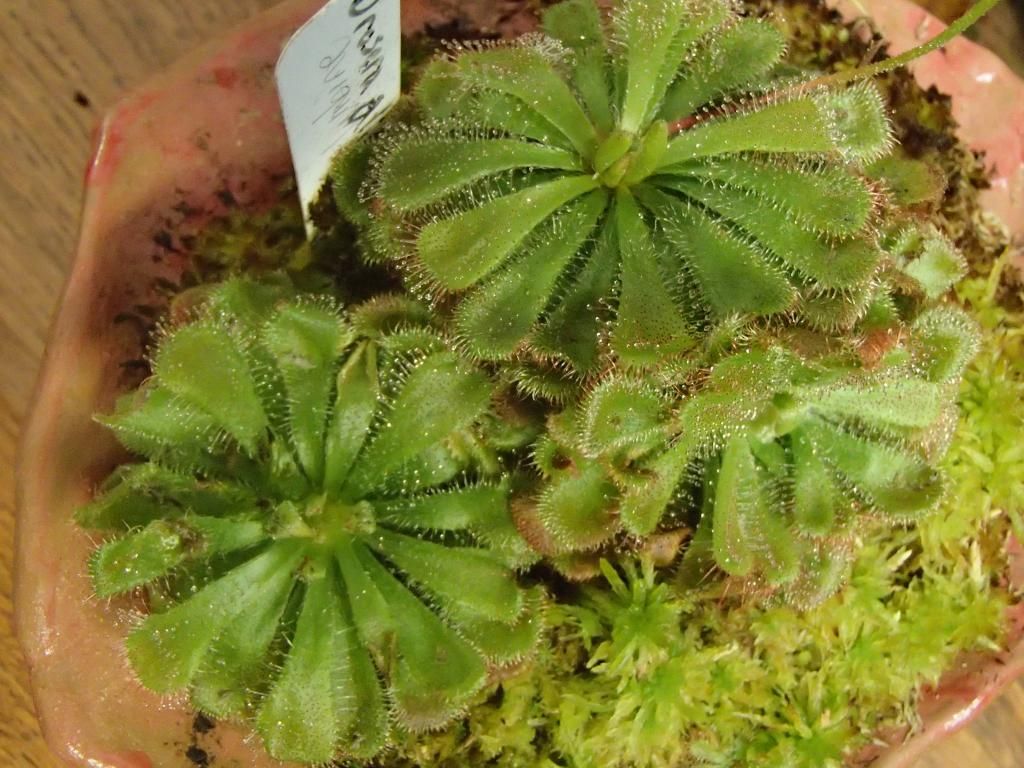 |
|
|
|
Post by Dave Evans on Aug 14, 2014 18:59:55 GMT
I think your two mystery dews might be D. abmirabilis and D. cuneifolia. Both appear to be suffering from slightly too low light strength. Some sundews like full sun for half the day, some for a quarter day, while others like full sun all day long. I guess these two fall into that last category.
|
|
|
|
Post by hcarlton on Aug 15, 2014 4:07:13 GMT
They don't seem to match the pics of cuneifolia I can find, that species has more wedge-shaped leaves while these have a distinct petiole and a rounded tip. And I know they need more light, but being a college kid and kind of strapped for money I'm limited on what resources I can splurge on. Once I have the capacity to, I plan on increasing most of the lighting in all my grow spaces.
|
|
|
|
Post by Dave Evans on Aug 15, 2014 21:12:13 GMT
Might be a hybrid. Some of what we call species, might also be hybrids. In South Africa and surrounding lands, there are a lot of the Drosera species most of which can interbreed similar to Sarracenia without loosing fertility in successive generations.
|
|
|
|
Post by Not a Number on Aug 18, 2014 14:21:50 GMT
D. slackii is easily identified by the sparse, coarse red hairs on the adaxial surface of the leaves along with the pandurate shape.
The length of the petioles would suggest D. natalensis which is found with cuneate/ spatulate/pandurate shaped leaves.
|
|
|
|
Post by hcarlton on Aug 18, 2014 17:33:25 GMT
I have D. natalensis as well, those two don't match. D. natalensis is also a far more prolific grower for me.
|
|
|
|
Post by Not a Number on Aug 19, 2014 0:10:45 GMT
Well they aren't D. admirabilis. The petioles or rather the area without tentacles are too long, the opening leaves too pointy looking. The opening leaves on D. admirabilis unroll more than unfold - similar to D. trinervia. Indeed you'll often find the three nerves on the abaxial surface of unopened leaves on D. admirablis. The tentacle density isn't high enough on the first plants to be D. aliciae. It's difficult to tell on the second ones but doesn't appear dense enough either. What are the undersides of the leaves like. Appressed pubescent would be D. aliciae. Hairs are much more sparse on D. cuneifolia/admirabilis and D. natalensis. You can always try to key them out using Obermeyer's index: www.omnisterra.com/botany/cp/pictures/drosera/0075.htm |
|
|
|
Post by hcarlton on Aug 19, 2014 6:07:54 GMT
The first plant does have 3 faint veins on the leaf undersides, and very short hairs relatively sparsely spaced. The second plant is nearly glabrous underneath, and tentacles are slightly less dense than my aliciae. Sadly, I've not yet managed to keep the flower stalks alive so I have yet to see the details of those.
|
|







